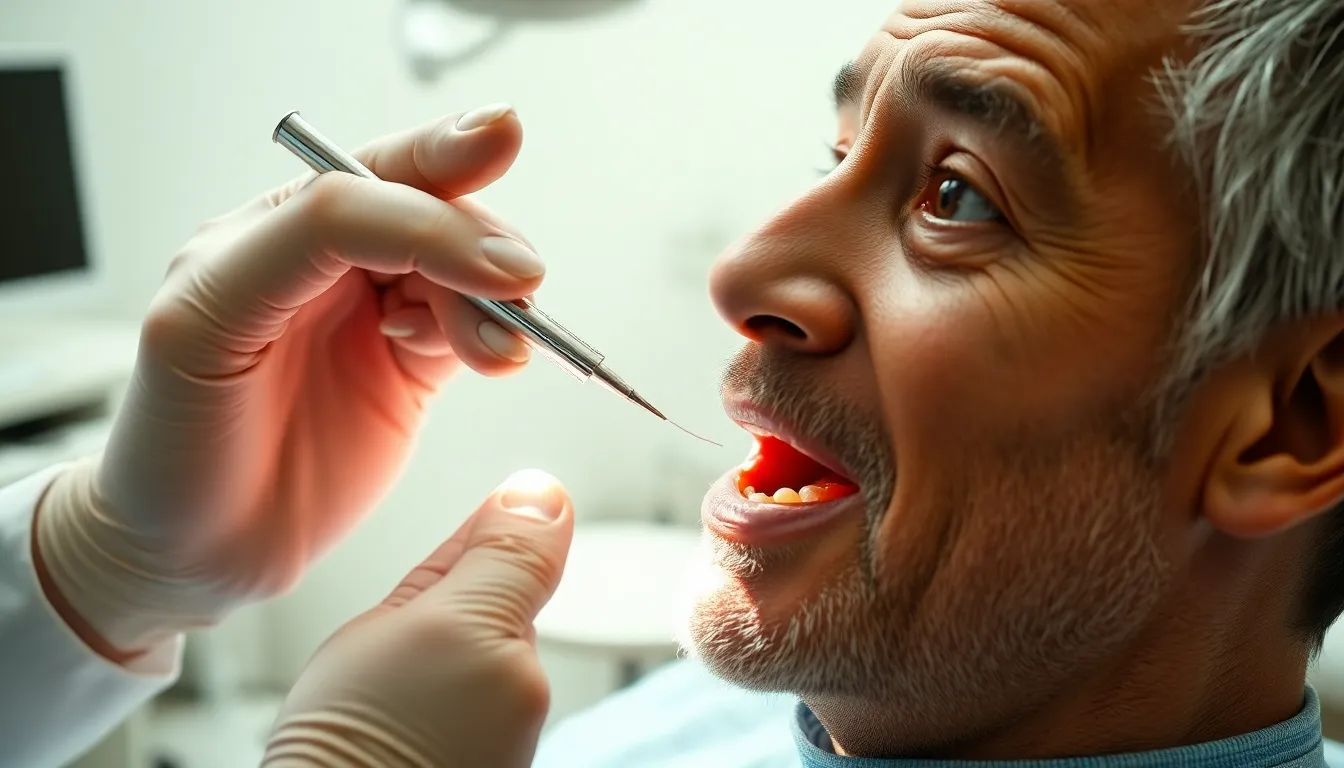Are you considering bonded teeth to transform your smile? Dental bonding offers a quick, affordable solution for chipped, stained, or gapped teeth that can boost your confidence instantly.
Bonded teeth use a tooth-colored resin material that’s applied and hardened with a special light, effectively “bonding” it to your tooth. This versatile cosmetic procedure can repair damaged teeth, close spaces, and even change the shape or color of teeth. Unlike more invasive options, bonding typically requires minimal preparation and can often be completed in a single visit.
Whether you’re looking to fix a minor imperfection or seeking a complete smile makeover, understanding how dental bonding works can help you decide if it’s the right choice for your dental needs. The procedure is relatively painless, preserves most of your natural tooth structure, and delivers immediate results.
What Are Bonded Teeth?
Bonded teeth refer to teeth that have been treated with dental bonding, a procedure where tooth-colored composite resin is applied and hardened on the tooth surface. This cosmetic dental technique enhances the appearance of your teeth while addressing various dental issues.
Types of Dental Bonding
Dental bonding comes in several forms depending on your exact needs. Direct composite bonding involves applying the resin directly to your tooth, sculpting it into shape, and hardening it with a special light. Adhesive bonding utilizes the resin as a strong adhesive to attach other dental materials like veneers, crowns, or bridges to your natural teeth. Composite veneers represent another form of bonding where thin layers of resin cover the front surface of teeth, creating a uniform appearance.
One of our patients, Sarah, came in with concerns about small chips in her front teeth. Dr. Harris recommended direct composite bonding, explaining, “For minor cosmetic issues like Sarah’s, direct bonding provides immediate results with minimal tooth preparation.”
Common Issues Treated With Bonding
Dental bonding effectively resolves many aesthetic and functional concerns. Chipped or cracked teeth can be repaired by filling in damaged areas with composite resin. Discolored teeth that don’t respond to whitening treatments benefit from bonding to cover stains. Gap closure between teeth happens without orthodontic treatment by building up the sides of adjacent teeth with resin. Tooth reshaping allows for lengthening short teeth or adjusting irregular shapes for a more balanced smile. Protection of exposed roots occurs when bonding covers areas where gums have receded, reducing sensitivity and preventing further damage.
The Dental Bonding Procedure

Dental bonding transforms teeth that are discolored, chipped, cracked, or misaligned through a straightforward cosmetic procedure. This technique involves applying a composite resin to your tooth and carefully shaping it to enhance your smile’s appearance. The process follows seven essential steps:
- Shade Selection – Your dentist matches the resin color to your natural teeth using a specialized shade guide chart.
- Cleaning – All plaque and tartar are thoroughly removed from the tooth surface to ensure proper adhesion.
- Tooth Preparation – The surface is gently roughened to create an optimal bonding surface, sometimes involving minor shaping or drilling.
- Acid Etching – An acidic gel is applied to further texture the tooth surface, significantly improving the bond between your tooth and the resin material.
- Adding the Composite – The tooth-colored resin is carefully applied, molded, and shaped to achieve the desired aesthetic result.
- Curing the Composite – A special light hardens the resin quickly, securing it firmly to your tooth structure.
- Finishing Touches – Your newly bonded tooth is polished to match the surrounding teeth in both color and texture.
Preparing for Your Appointment
Dental bonding requires minimal preparation compared to other cosmetic dental procedures. Before your appointment, maintain your regular oral hygiene routine of brushing twice daily and flossing once daily. Avoid consuming heavily pigmented foods and beverages like coffee, red wine, or berries for 48 hours before your procedure to prevent potential staining issues.
Dr. Harris recommends scheduling a consultation appointment before the bonding procedure. “Many of my patients are surprised by how little preparation is needed for dental bonding,” says Dr. Harris. “The most important thing is coming in with realistic expectations about what bonding can achieve for your exact situation.”
What to Expect During Treatment
The dental bonding procedure typically takes 30-60 minutes per tooth, making it one of the fastest cosmetic dental treatments available. Most patients experience no pain during the procedure, so anesthesia isn’t usually necessary unless the bonding addresses a cavity or involves extensive work near the gumline.
Throughout the treatment, you’ll remain comfortable in the dental chair while your dentist applies the resin and shapes it to create a natural appearance. The special curing light used to harden the material feels warm but not uncomfortable. Once completed, you can immediately resume normal activities without any downtime or recovery period.
Benefits of Dental Bonding

Dental bonding offers many advantages as a versatile cosmetic procedure that can transform your smile. This non-invasive treatment provides both aesthetic improvements and practical benefits.
Cosmetic Advantages
Dental bonding excels at improving the visual appeal of your teeth through multiple applications. The tooth-colored composite resin creates natural-looking results that blend seamlessly with your existing teeth. You’ll appreciate how bonding can correct discoloration, chips, cracks, gaps, and uneven shapes without compromising your natural tooth structure. The procedure preserves your enamel since it typically requires minimal to no removal of natural tooth material. Many patients experience an immediate boost in self-confidence after their bonding treatment as their smile becomes brighter and more uniform.
Dr. Todd B. Harris notes, “I’ve seen remarkable transformations in patients’ confidence after dental bonding. One patient came in with chipped front teeth from a bicycle accident and left with a perfectly restored smile—the change in her demeanor was immediate and profound.”
Functional Improvements
Beyond aesthetics, dental bonding delivers practical benefits that improve your overall oral health. The composite resin effectively protects damaged teeth by repairing and sealing chips or cracks, preventing further deterioration and reducing sensitivity. Small spaces between teeth that might affect your bite alignment or speech clarity can be closed through this technique. The same tooth-colored material serves as an excellent alternative to traditional metal fillings when treating small cavities, offering both functional restoration and cosmetic appeal in one solution.
Dental bonding stands out for its convenience and affordability compared to other cosmetic dental treatments. You can typically complete the entire procedure in just one dental visit, making it a quick solution for improving your smile. The treatment costs significantly less than alternatives like veneers or crowns while still providing long-lasting improvements. Most patients find bonding procedures comfortable since they rarely require anesthesia or drilling, making this an accessible option for those with dental anxiety.
Comparing Bonded Teeth to Other Dental Treatments

Dental bonding offers distinct advantages and limitations compared to alternative cosmetic dental answers. Understanding these differences helps you make informed decisions about which treatment best addresses your exact dental concerns.
Bonding vs. Veneers
Dental bonding applies composite resin directly to your tooth surface, while veneers are custom-made thin porcelain shells attached to the front of teeth. Bonding requires minimal or no enamel removal, making it significantly less invasive than veneers, which typically need more substantial enamel reduction for proper fitting. Durability varies considerably between these options—veneers generally last 10-15 years and resist staining better, whereas bonding typically lasts 3-10 years depending on maintenance and material quality.
Cost represents another major difference, with bonding being more affordable for addressing minor aesthetic concerns. Veneers deliver superior aesthetics and color consistency, especially for major cosmetic corrections, though at a higher price point.
Dr. Todd B. Harris notes, “Many of my patients initially consider veneers but opt for bonding after learning it can achieve remarkable results for exact concerns without the commitment and cost of porcelain. One patient with a chipped front tooth was thrilled with how bonding restored her smile in just one visit, avoiding the two-week wait typical with veneer fabrication.”
Bonding vs. Crowns
Dental crowns and bonding serve fundamentally different purposes in restorative dentistry. Crowns completely encapsulate damaged teeth, providing protection for extensively damaged or structurally compromised teeth, while bonding primarily addresses cosmetic issues or minor repairs. The preparation process differs dramatically—crowns demand important tooth reduction to accommodate the full-coverage cap, but bonding preserves almost all natural tooth structure.
Strength represents a key advantage for crowns, offering superior protection for teeth with extensive decay or fractures. Bonding treatments can typically be completed in a single visit at lower cost, whereas crowns require multiple appointments and higher investment. Longevity favors crowns, which commonly last 10-15+ years compared to bonding’s 3-10 year lifespan.
Recent advances in nano-composite materials have improved bonding’s strength, polishability, and natural appearance, improving its effectiveness as a cosmetic solution. These improvements allow bonded teeth to blend seamlessly with your natural enamel while providing better durability than earlier bonding materials.
The ideal treatment choice depends on several factors: the extent of your dental issues, desired longevity, budget constraints, and aesthetic goals. Consulting with your dentist provides personalized guidance on whether bonding, veneers, or crowns best suit your exact situation.
Caring for Bonded Teeth

Dental bonding enhances your smile with tooth-colored resin applied to imperfections, but proper care is essential to maintain both appearance and durability. Your bonded teeth require exact maintenance practices to ensure they remain beautiful and functional for years to come.
Daily Maintenance Tips
Brush your bonded teeth twice daily using a soft-bristled toothbrush and non-abrasive fluoride toothpaste to protect the bonding material from damage. Gentle brushing techniques prevent scratching the resin surface while maintaining overall oral hygiene. Floss carefully around bonded areas each day to remove plaque and food particles that could lead to decay or gum disease near the bonding edges. Avoid biting directly into hard foods like apples, carrots, or crusty bread, as these can chip or crack the bonding material. Staining substances such as coffee, tea, red wine, and tobacco should be limited, especially during the first 48 hours after your procedure when the bonding is most susceptible to discoloration.
Dr. Todd B. Harris often shares the story of a patient who maintained her dental bonding for nearly 10 years through diligent care: “She avoided nail-biting, pen-chewing, and using her teeth as tools—habits that commonly damage bonded teeth. Her commitment to proper maintenance resulted in bonding that lasted well beyond the average lifespan.”
How Long Does Dental Bonding Last?
Dental bonding typically lasts between 4 to 8 years with proper care and maintenance. The location of your bonding significantly affects its longevity—bonding on biting surfaces or edges tends to wear faster than bonding on front surfaces. Your daily oral hygiene practices directly impact how long the bonding remains intact, with consistent brushing and flossing extending its lifespan. Personal habits like grinding teeth, chewing ice, or opening packages with your teeth can substantially reduce bonding durability. Regular dental check-ups every six months allow for professional cleaning and early detection of any wear, chips, or discoloration that might require touch-ups or repairs.
Environmental factors and diet choices influence bonding longevity, with excessive exposure to acidic foods, staining agents, or temperature extremes potentially shortening the life of your dental bonding. The quality of materials used and the dentist’s expertise during application also play crucial roles in determining how long your bonding will maintain its appearance and function.
Cost of Dental Bonding

Dental bonding offers an affordable cosmetic solution with costs varying based on several factors. The national average price for teeth bonding is $431, though you’ll typically find costs ranging between $288 and $915 depending on your exact needs.
Most patients pay between $100 and $600 per tooth for dental bonding. Simple procedures often fall in the $100-$400 range, while more complex cases may reach the higher end of the spectrum. Your final cost depends on the number of teeth being bonded, the complexity of the procedure, your dentist’s experience, and their geographic location.
Dr. Harris notes, “Many patients are pleasantly surprised by the affordability of dental bonding compared to other cosmetic options like veneers or crowns, especially when they’re addressing just one or two problem areas.”
Insurance Coverage Options
Dental insurance sometimes covers bonding procedures, but coverage depends entirely on the purpose of your treatment. When bonding addresses structural issues such as repairing chipped or cracked teeth, many insurance plans provide at least partial coverage. But, purely cosmetic procedures—like closing gaps or improving tooth appearance—typically aren’t covered by standard dental insurance policies.
Sarah, a recent patient, shared her experience: “I was thrilled when my insurance covered 80% of my dental bonding because it was considered a restorative procedure for my chipped front tooth. I only paid $87 out of pocket for a repair that completely transformed my smile.”
Before scheduling your appointment, contact your insurance provider to verify coverage details for your exact situation. Many dental offices can also help by submitting a pre-determination request to your insurance company, giving you a clearer picture of your expected out-of-pocket costs.
Financing Your Treatment
Multiple financing options exist to make dental bonding more accessible regardless of your budget. Many dental practices offer payment plans that allow you to spread the cost over several months, often without interest for qualified patients.
Healthcare-exact credit cards like CareCredit provide another popular financing route, offering special financing terms for dental procedures. These cards frequently feature promotional periods with no interest if paid in full within a specified timeframe.
Third-party financing services partnered with dental offices create additional payment flexibility. Most dentists prioritize making essential dental care financially accessible, so don’t hesitate to discuss your concerns openly with your provider.
A dental office manager recently explained, “We’ve seen patients transform their smiles with bonding by using our interest-free payment plan of just $75 per month. The affordability factor is why bonding remains one of our most popular cosmetic treatments.”
When comparing the cost of dental bonding to other cosmetic options, it’s worth noting that bonding typically costs significantly less than veneers ($925-$2,500 per tooth) or crowns ($1,000-$3,500 per tooth), making it an economical choice for addressing minor cosmetic concerns.
Conclusion
Dental bonding offers a remarkable balance of affordability versatility and immediate results for improving your smile. With minimal preparation and preservation of your natural tooth structure this procedure stands out as an accessible solution for addressing common cosmetic concerns.
Whether you’re dealing with chips gaps discoloration or minor damage bonded teeth can transform your appearance in just one visit. While not as durable as veneers or crowns bonding provides excellent value with proper care potentially lasting 4-8 years.
Remember that successful bonding results depend on both professional expertise and your ongoing maintenance. By understanding the procedure costs care requirements and alternatives you can confidently decide if dental bonding is the right choice for your smile goals.
Frequently Asked Questions
What is dental bonding?
Dental bonding is a cosmetic dental procedure where tooth-colored resin is applied and hardened on the tooth to improve its appearance. It’s used to repair chipped, stained, or gapped teeth, and can alter the shape or color of teeth. The procedure is quick, affordable, and minimally invasive, typically completed in a single visit with immediate results.
How long does the dental bonding procedure take?
The dental bonding procedure typically takes 30-60 minutes per tooth. Since it requires minimal preparation and is generally painless, patients can usually resume normal activities immediately after treatment. The entire process can often be completed in a single dental visit, making it a convenient option for those with busy schedules.
What issues can dental bonding fix?
Dental bonding can address numerous cosmetic and functional issues including repairing chipped or cracked teeth, covering discolored teeth, closing small gaps between teeth, reshaping teeth, and protecting exposed tooth roots. It’s versatile enough to handle minor imperfections while preserving natural tooth structure.
Is dental bonding painful?
Dental bonding is generally painless and requires minimal to no anesthesia. The procedure involves little to no removal of tooth enamel, which means there’s typically no drilling or extensive preparation required. Most patients experience no discomfort during or after the procedure and can return to normal activities immediately.
How does dental bonding compare to veneers and crowns?
Dental bonding is less invasive and more affordable than veneers and crowns but typically less durable. Veneers require more enamel removal but offer superior aesthetics and longevity. Crowns provide extensive protection for severely damaged teeth but need significant tooth reduction and multiple appointments. The best option depends on your specific dental issues, budget, and aesthetic goals.
How long does dental bonding last?
Dental bonding typically lasts between 4 to 8 years with proper care. Longevity depends on the location of the bonding, personal habits, oral hygiene practices, and regular dental check-ups. Avoiding hard foods, staining substances, and practicing good oral hygiene can significantly extend the lifespan of your dental bonding.
How much does dental bonding cost?
The national average cost for dental bonding is approximately $431 per tooth, with most patients paying between $100 and $600. Prices vary based on location, complexity of the procedure, and dentist experience. Dental bonding is typically more economical than veneers or crowns, making it an attractive option for addressing minor cosmetic concerns.
Does insurance cover dental bonding?
Insurance may partially cover dental bonding when it’s performed to address structural issues like filling cavities or repairing fractured teeth. However, purely cosmetic procedures are typically not covered by insurance. Check with your provider about specific coverage details and consider alternative financing options like payment plans or healthcare credit cards if needed.
How do I care for bonded teeth?
Care for bonded teeth by brushing with a soft-bristled toothbrush and non-abrasive fluoride toothpaste twice daily. Floss carefully around bonded areas, avoid biting hard objects, and limit consumption of staining substances like coffee, tea, and tobacco. Regular dental check-ups are essential for maintaining the appearance and durability of your dental bonding.
Can anyone get dental bonding?
Most people with minor cosmetic dental concerns are good candidates for dental bonding. However, those with severe tooth decay, extensive damage, or significant bite issues may require alternative treatments. The procedure is ideal for small cosmetic fixes and minor repairs, but not for major structural problems. Consult with your dentist to determine if dental bonding is right for your specific situation.







